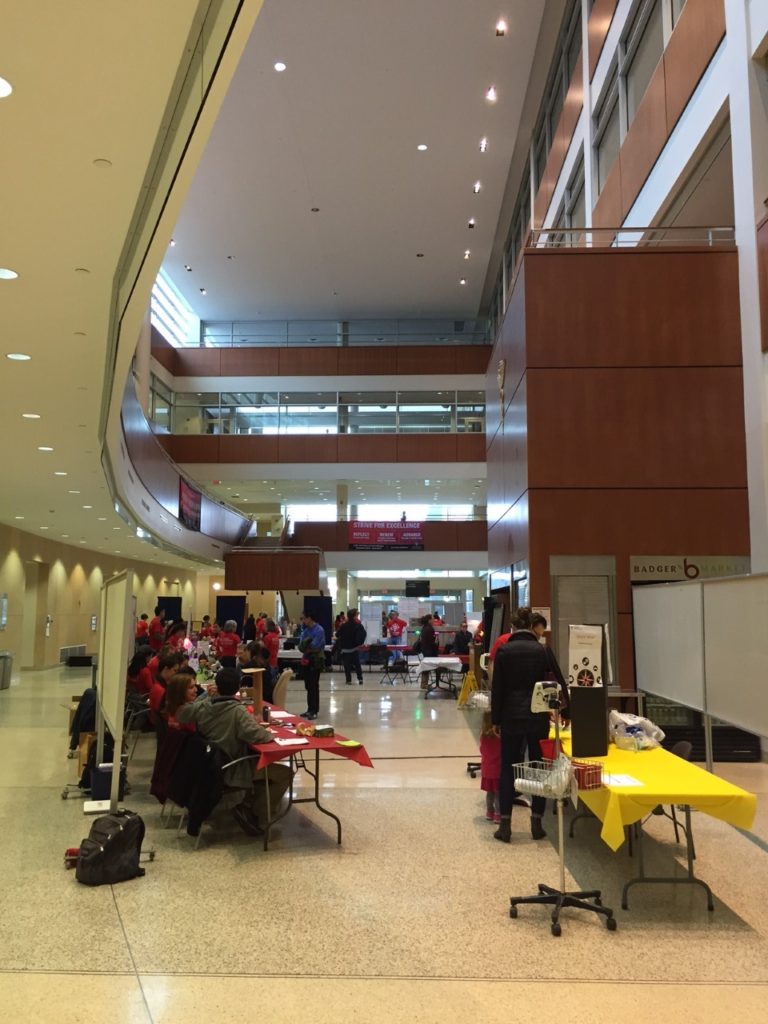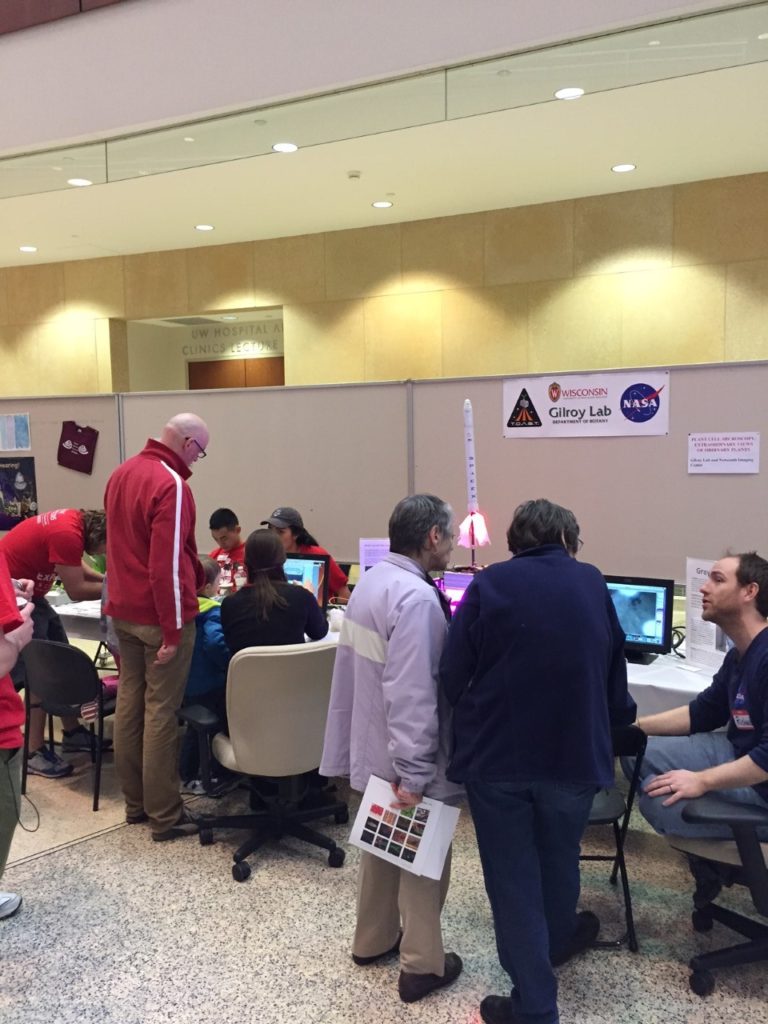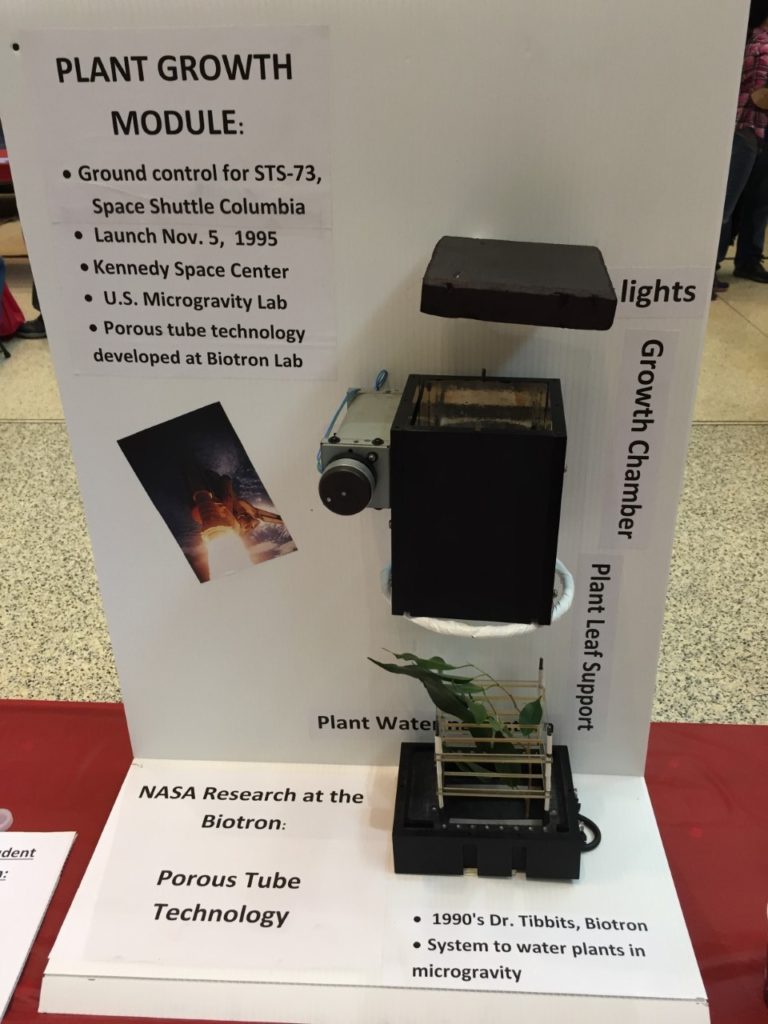Today, I headed over with members of the Gilroy Lab to the UW Health Sciences Learning Center to participate in Science Expeditions 2017. Science Expeditions is a public event where different researchers around the University present their work. Our focus for the day was plant cell biology and microscopy, but we talked about astrobotany research as well.

We drove over from the Botany building and started setting up around 9:40 am. We brought 2 microscopes, 2 handheld microscopes, 2 monitors, some vegetables, slides, a replica of the VEGGIE plant growth system, a model of a SpaceX Falcon rocket, and some M&Ms. We also brought a passion for science.

There was a great turnout and lots of people stopped to peruse our station. We had cross-sections of celery available for viewing under the microscope; their vascular bundles and collenchyma were very clear. One kid asked me, “Have you grown celery in space?” I looked at Simon (our PI) uncertainly and said “You know, I don’t think so.” Simon also shook his head skeptically, “No, I don’t think so. No, we haven’t. You see, the thing with eating celery is you burn more calories chewing than you actually retain from it so it’s not very good for feeding astronauts.” Very cool. Then the boy asked me, “Have you been in space?” I laughed. “No I actually haven’t. How about you? Do you want to go to space?” “No,” he replied, “I think it’s too dangerous.” That could very well be.
It was a good time talking to people about our research and explaining aspects of plant biology. It is absolutely true that teaching something helps you learn it. The gaps in my knowledge became so apparent when someone came up with a good question I did not know the answer to.
I walked around for a bit and visited Björn from the Biotron laboratory, because his station was relevant to astrobotany. He had a clinostat and a ground control plant growth module from the Space Shuttle Columbia Launch STS-73. Read about these below:


All in all, it was great seeing so many families and children enthusiastic about science research. They’d all make good astrobotanists, I think.
Let’s grow plants in space.
